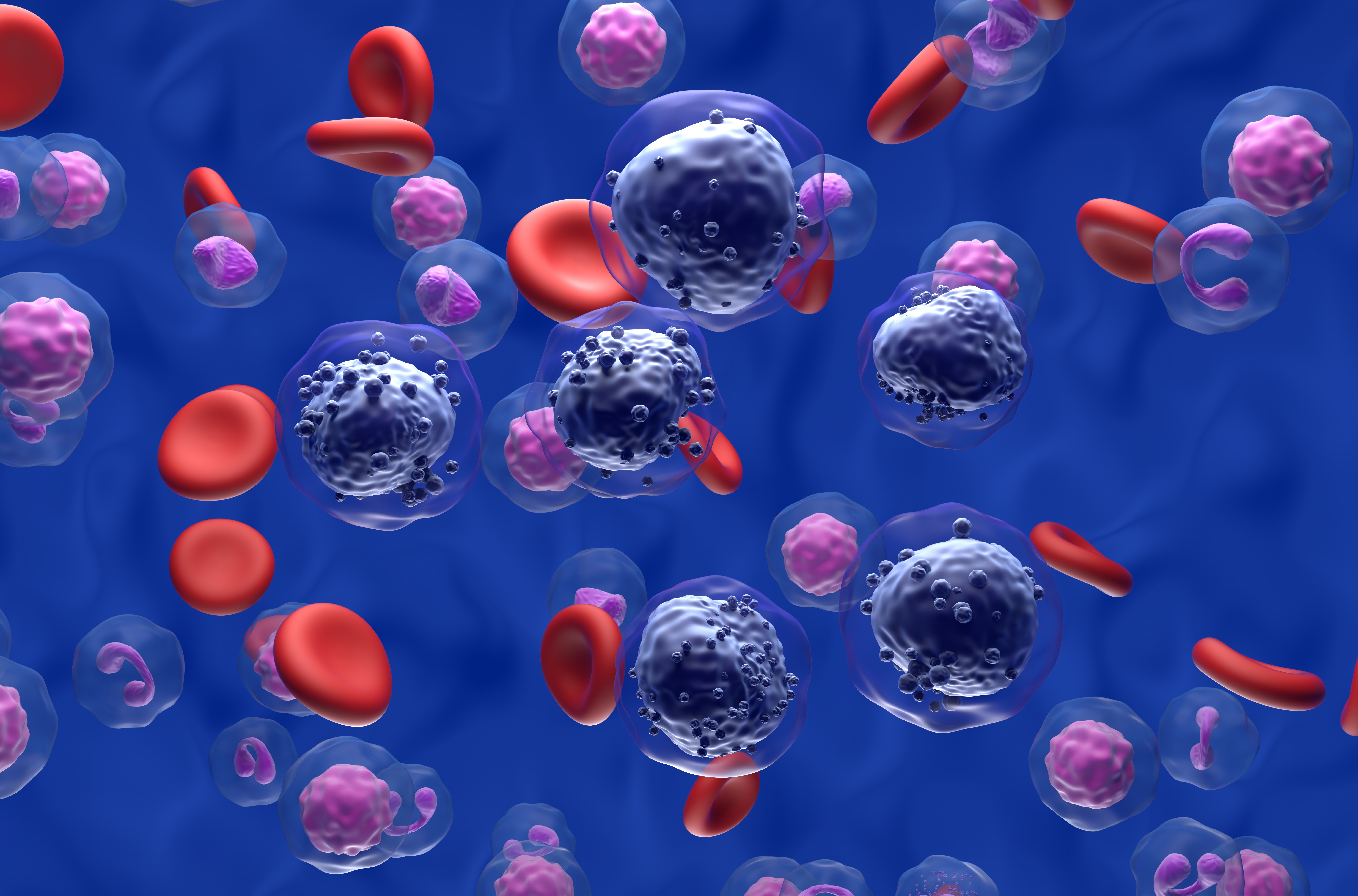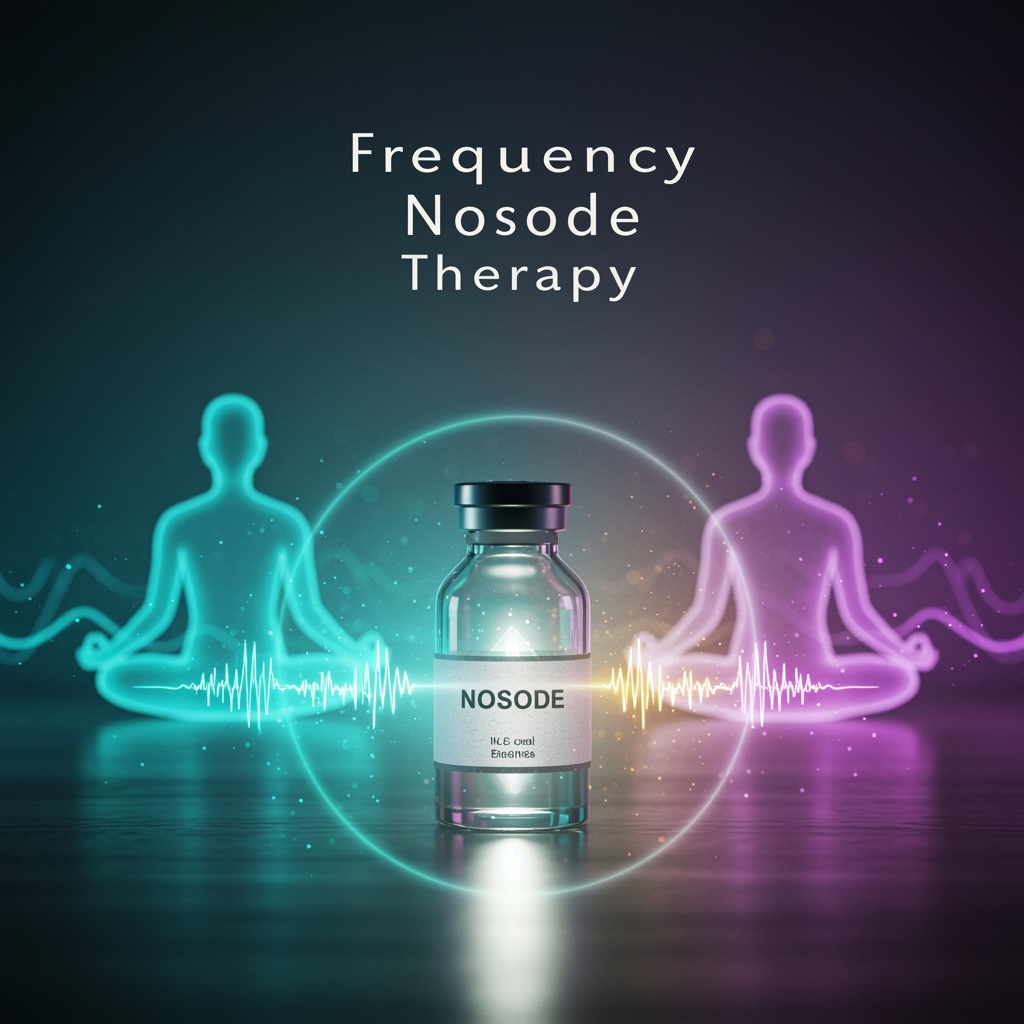
Introduction: What is myeloid leukaemia?
Myeloid leukaemia, a collective term for various malignant diseases of the haematopoietic system, manifests itself through an uncontrolled proliferation of degenerated myeloid cells in the bone marrow. In essence, it is a group of cancers that originate in the myeloid precursor cells of the bone marrow, from which granulocytes, monocytes, erythrocytes and thrombocytes normally develop. These degenerated cells, also known as blasts, displace healthy haematopoiesis, resulting in a lack of functioning blood cells.
In order to classify myeloid leukaemia, it is important to differentiate it from other forms of leukaemia. In contrast to lymphocytic leukaemia, which affects the lymphatic cells, myeloid leukaemia affects the myeloid cells. Within myeloid leukaemia, a distinction is mainly made between acute myeloid leukaemia (AML) and chronic myeloid leukaemia (CML). AML is characterised by rapid disease progression and a high number of immature blasts in the blood and bone marrow, while CML is characterised by slower progression and the presence of more mature but still degenerated cells. Each of these main forms in turn comprises various subtypes that differ in their genetic and molecular characteristics as well as in their clinical course. This diversity makes precise diagnosis and individualised therapy planning essential.
Causes and risk factors
The causes and risk factors of myeloid leukaemia are varied and complex, with both genetic and environmental factors playing a role. A genetic predisposition can increase the risk, although myeloid leukaemia is rarely inherited directly. Certain genetic syndromes, such as Down syndrome or Fanconi anaemia, are associated with an increased risk of developing myeloid leukaemia.
Environmental influences, in particular exposure to benzene, a solvent used in the chemical industry, and ionising radiation (for example after nuclear accidents or during radiotherapy), are regarded as proven risk factors. In addition, prior treatment with chemotherapy or radiotherapy, particularly with certain cytostatic drugs such as alkylants or topoisomerase II inhibitors, can increase the risk of developing secondary myeloid leukaemia, which manifests itself years after the original cancer.
Age also plays a significant role, as the risk of myeloid leukaemia increases with age. Older people have a higher incidence, possibly due to an age-related accumulation of genetic changes and weakened immune function that favour the development of leukaemia cells. It is important to emphasise that in many cases no clear cause can be identified and the development of myeloid leukaemia is probably due to a combination of factors.
Symptoms of myeloid leukaemia
Myeloid leukaemia manifests itself through a broad spectrum of symptoms, the severity and combination of which can vary greatly. Common symptoms that frequently occur include pronounced fatigue and weakness, which are often perceived as debilitating and have a significant impact on everyday quality of life. Unintentional weight loss that is not due to changes in dietary habits or increased physical activity can also be a warning sign.
These non-specific symptoms result from impaired haematopoiesis in the bone marrow and the resulting impairment of organ function. Bone marrow insufficiency leads to a further series of symptoms: anaemia, which is characterised by a lack of red blood cells, manifests itself in paleness, shortness of breath and dizziness. An increased susceptibility to infections is the result of a lack of functioning white blood cells (leucopenia), which weakens the immune system and makes the body more susceptible to bacterial, viral and fungal infections.
The bleeding tendency caused by a lack of thrombocytes (thrombocytopenia) manifests itself in the form of spontaneous bruising (haematomas), nosebleeds, bleeding gums or petechiae (punctiform skin haemorrhages). Depending on the specific form of myeloid leukaemia, specific symptoms may also occur. For example, acute promyelocytic leukaemia (APL) can lead to a severe coagulation disorder (disseminated intravascular coagulopathy, DIC), which can cause life-threatening bleeding. In other forms of AML, skin changes, bone pain or an enlargement of the liver and spleen (hepatosplenomegaly) can be observed. CML, on the other hand, can be asymptomatic in the early phase or manifest itself through non-specific symptoms such as night sweats, abdominal pain or a feeling of pressure in the left upper abdomen due to the enlargement of the spleen.
Diagnostic procedure
The diagnosis of myeloid leukaemia is based on a multi-stage procedure that begins with a detailed medical history and a thorough physical examination. The doctor records the patient's medical history, including possible risk factors and previous illnesses, and looks for clinical signs that could indicate leukaemia, such as pallor, petechiae or an enlarged spleen.
A decisive step is the blood count, which provides information about the number of different blood cells and the proportion of immature cells, so-called blasts. An increased leukocyte count or a high proportion of blasts in the peripheral blood can indicate leukaemia, but are not always specific. The definitive diagnosis is usually made by means of a bone marrow puncture and biopsy. Bone marrow is removed and analysed cytologically, cytogenetically and molecularly.
Cytology assesses the morphology of the cells, cytogenetics analyses the chromosomes for changes and molecular genetics looks for specific gene mutations that may be characteristic of the particular form of myeloid leukaemia. These detailed analyses enable a precise classification of the leukaemia and are decisive for the choice of suitable therapy. Complementary imaging techniques such as computed tomography (CT) or magnetic resonance imaging (MRI) can be used to assess the extent of the disease and rule out other possible causes of the symptoms, especially if infiltration of organs by leukaemia cells is suspected.
Treatment of acute myeloid leukaemia (AML)
The treatment of acute myeloid leukaemia (AML) is aimed at eliminating the malignant blasts in the bone marrow and achieving remission. The therapy is divided into several phases. The first phase is induction therapy, the main aim of which is to achieve a complete remission. This phase usually involves intensive chemotherapy with cytostatic drugs such as cytarabine and anthracyclines, which aims to kill the leukaemia cells and restore normal haematopoiesis.
Once remission has been achieved, consolidation therapy follows with the aim of eliminating any remaining leukaemia cells and preventing a relapse. This phase may include further chemotherapy cycles or, in certain cases, an allogeneic stem cell transplant, in which the patient's bone marrow is replaced by that of a healthy donor.
Alongside chemotherapy, comprehensive supportive therapy is essential to minimise complications. This includes transfusions of blood products to treat anaemia and thrombocytopenia, the administration of antibiotics and antimycotics to combat infections caused by immunosuppression and careful monitoring of organ function.
In addition, new therapeutic approaches are constantly being researched and applied, including targeted therapies that attack specific molecular changes in the leukaemia cells, as well as immunotherapies that activate the patient's immune system to recognise and destroy the cancer cells. These modern approaches offer hope for improved treatment outcomes, particularly for patients with certain genetic mutations or relapses.
Treatment of chronic myeloid leukaemia (CML)
The treatment of chronic myeloid leukaemia (CML) has undergone a revolutionary change over the last two decades with the introduction of tyrosine kinase inhibitors (TKIs). These drugs, such as imatinib, dasatinib, nilotinib, bosutinib and ponatinib, specifically target the BCR-ABL fusion protein, which is produced by the translocation between chromosomes 9 and 22 and causes the uncontrolled proliferation of myeloid cells.
TKIs have proven to be extremely effective in inducing complete haematological and cytogenetic remission in most patients. The success of therapy is closely monitored by regular blood count checks, cytogenetics (examination of chromosomes) and increasingly also by molecular tests, in particular quantitative PCR (polymerase chain reaction) to determine the BCR-ABL transcript level.
The aim of treatment is to achieve a deep molecular remission, which is associated with a significantly reduced risk of disease progression. Although TKIs are generally well tolerated, side effects can occur, ranging from mild symptoms such as nausea, skin rash or muscle cramps to more serious complications such as pleural effusions or cardiovascular events.
The management of these side effects is an important part of CML treatment. Allogeneic stem cell transplantation, in which healthy stem cells from a donor replace the patient's diseased bone marrow, is now an alternative treatment option that is primarily considered in cases of TKI resistance or intolerance, in advanced-stage CML or in the presence of specific genetic risk factors.
Living with myeloid leukaemia
Living with myeloid leukaemia presents those affected and their families with immense challenges that go far beyond purely medical treatment. The diagnosis and the often intensive therapy can lead to considerable psychological stress, which is why psychosocial support from psychologists, social workers or specialised counselling centres is of central importance.
This help can be crucial in coming to terms with the illness, coping with anxiety and depression and improving quality of life. A common and distressing symptom is fatigue, an extreme exhaustion that often does not improve with rest. Strategies for dealing with fatigue, such as energy management, prioritising activities and relaxation techniques, can help to cope better with everyday life.
Diet also plays an important role: a balanced, nutritious diet with sufficient protein and vitamins can strengthen the immune system and support the therapy. Exercise and sport, adapted to the individual's state of health, can also help to improve well-being and reduce fatigue.
Regular follow-up examinations are essential in order to recognise a relapse at an early stage and adjust the therapy if necessary. Socialising with other sufferers in self-help groups offers the opportunity to share experiences, support each other and gain new perspectives. These groups can provide a sense of community and help to cope better with the challenges of the disease.
Research and outlook
Research in the field of myeloid leukaemia is dynamic and promising, with numerous projects aiming to deepen our understanding of the disease mechanisms and develop innovative therapeutic approaches. Current research focuses include the identification of new genetic mutations that contribute to the development and progression of myeloid leukaemia and the investigation of the role of the immune system in the control of leukaemia cells.
On this basis, new targeted therapies are being developed that specifically target the molecular properties of leukaemia cells, for example inhibitors of mutations such as FLT3 or IDH. At the same time, immunotherapies such as CAR-T cell therapies and checkpoint inhibitors are being researched to activate the body's own immune system to fight leukaemia.
A central aspect is personalised medicine, in which treatment decisions are based on the individual genetic constitution and the specific characteristics of the patient's leukaemia. This enables more precise and effective treatment that minimises the risk of side effects.
Finally, early detection and prevention play an important role, with studies aiming to identify risk factors and develop strategies to reduce the risk of leukaemia. Continuous progress in research promises a steady improvement in the prognosis and quality of life of patients with myeloid leukaemia.
In addition, the use of frequency nosodes to treat and alleviate the symptoms of myeloid leukaemia is being investigated in alternative medicine. Frequency nosodes are homeopathic preparations that are based on specific frequencies and aim to support the body's own healing processes. It is believed that they can help to strengthen the immune system and promote the well-being of patients. Although further research is needed to confirm their efficacy and safety, they may offer a complementary therapy option in the holistic treatment of myeloid leukaemia.

